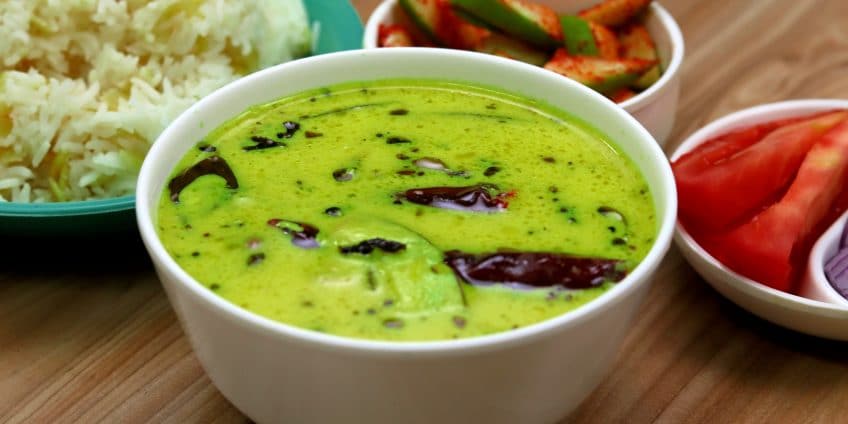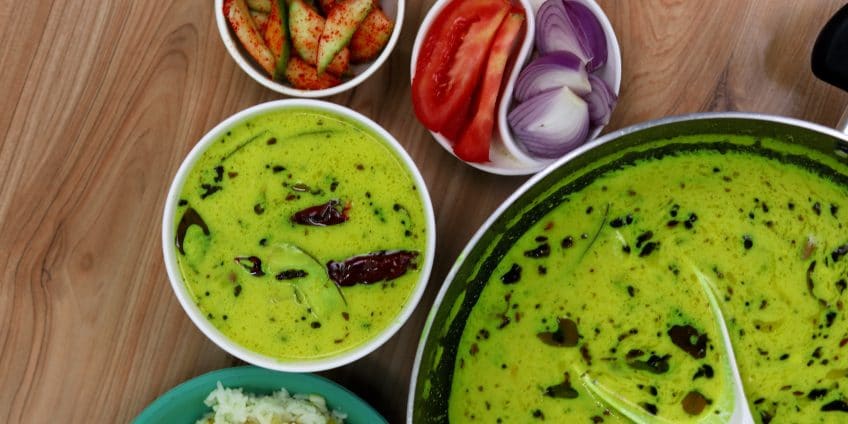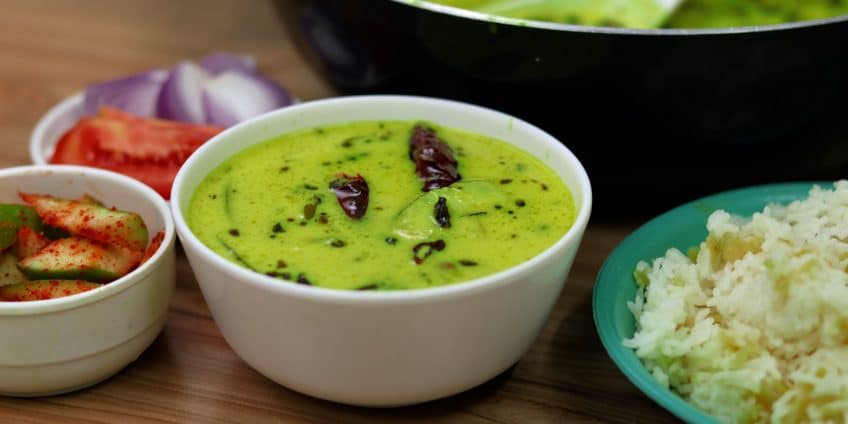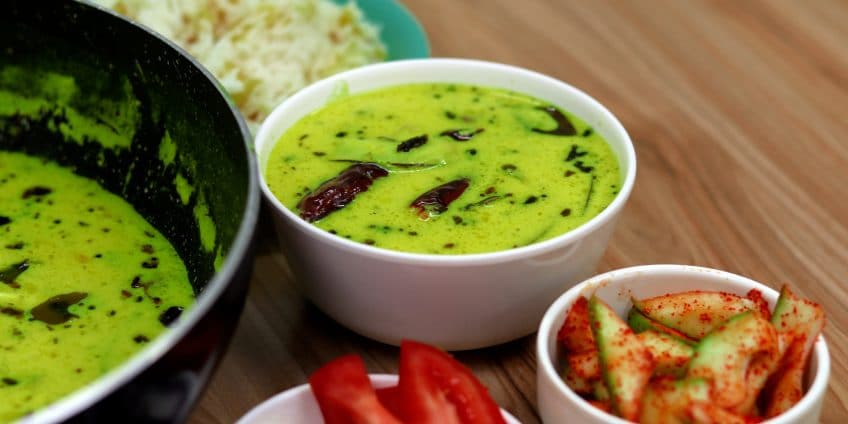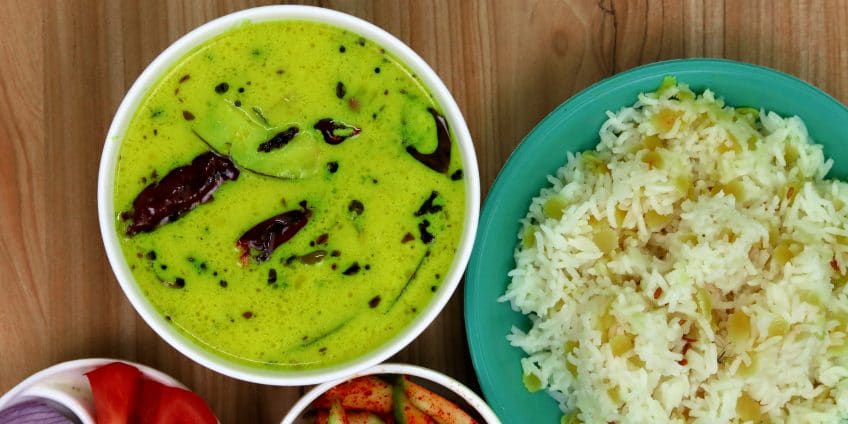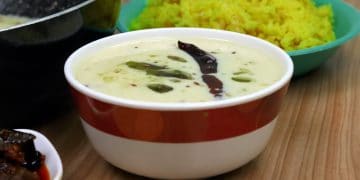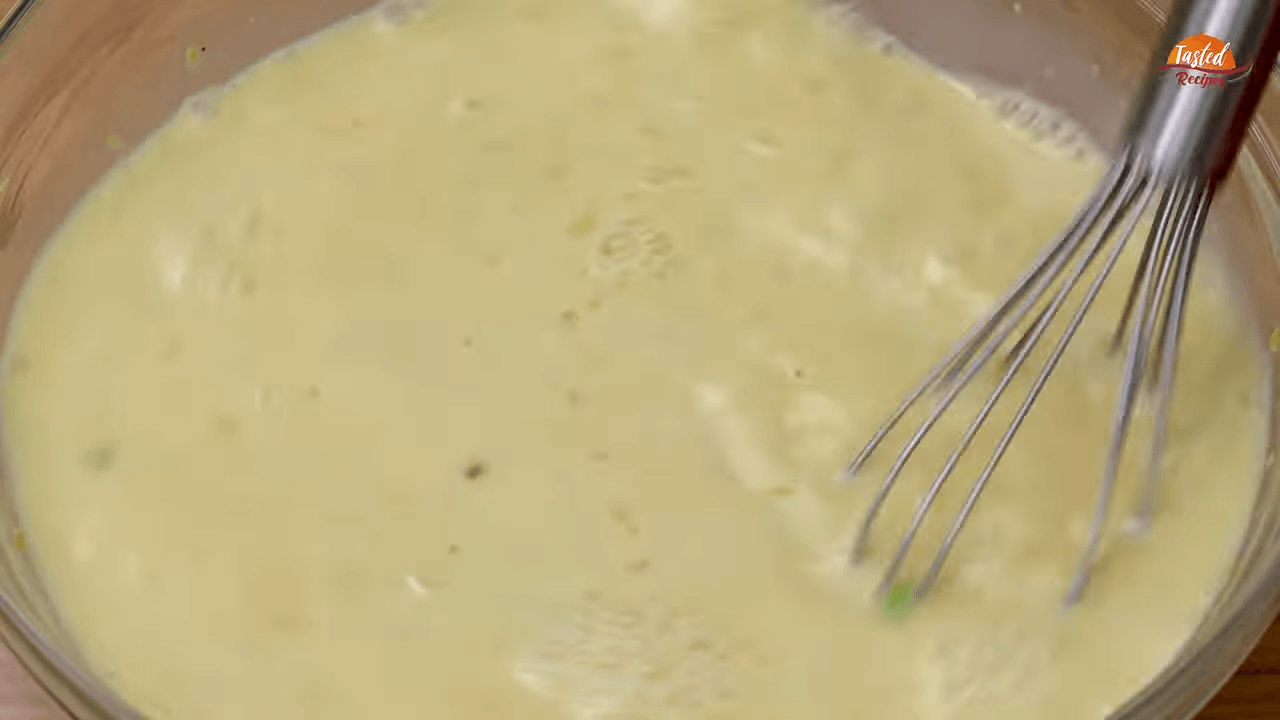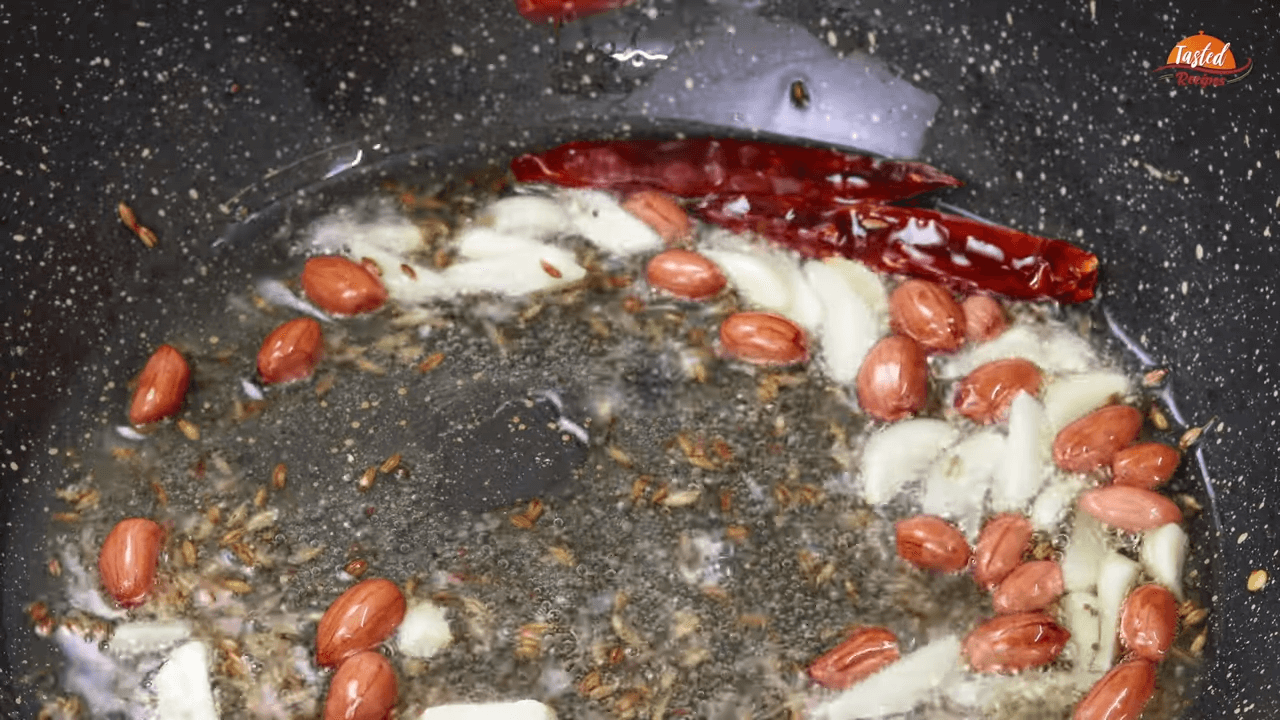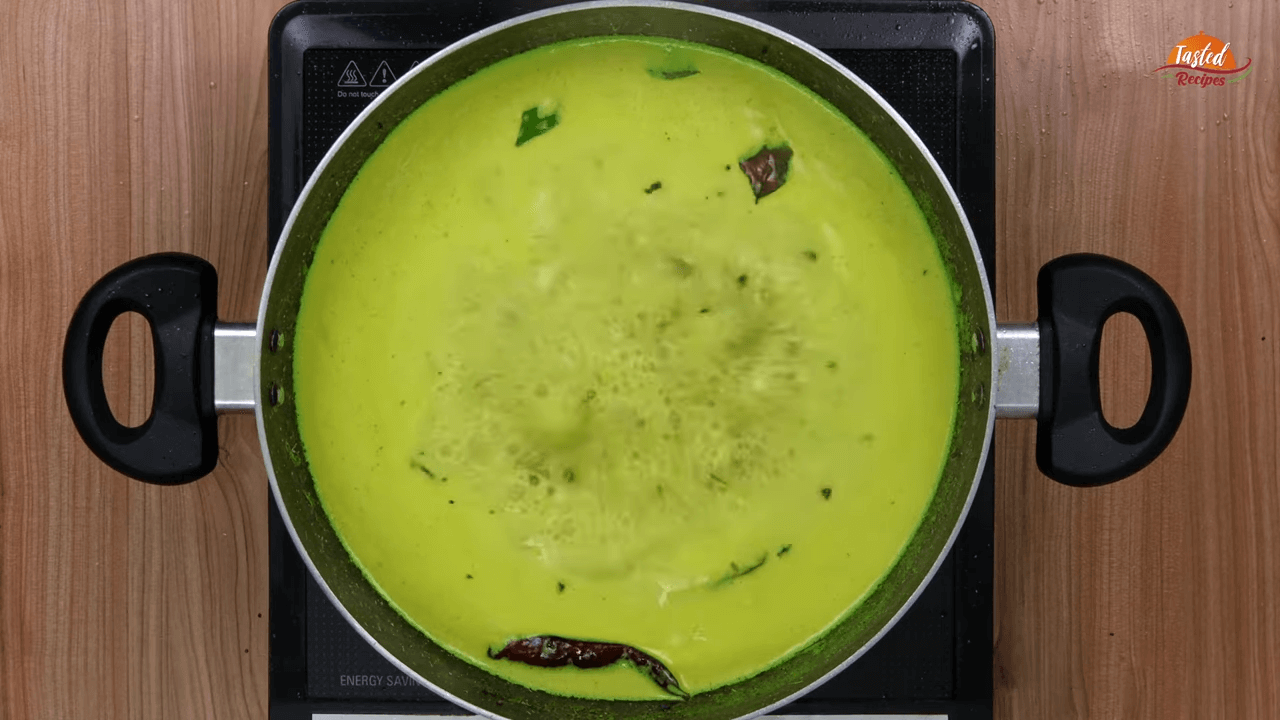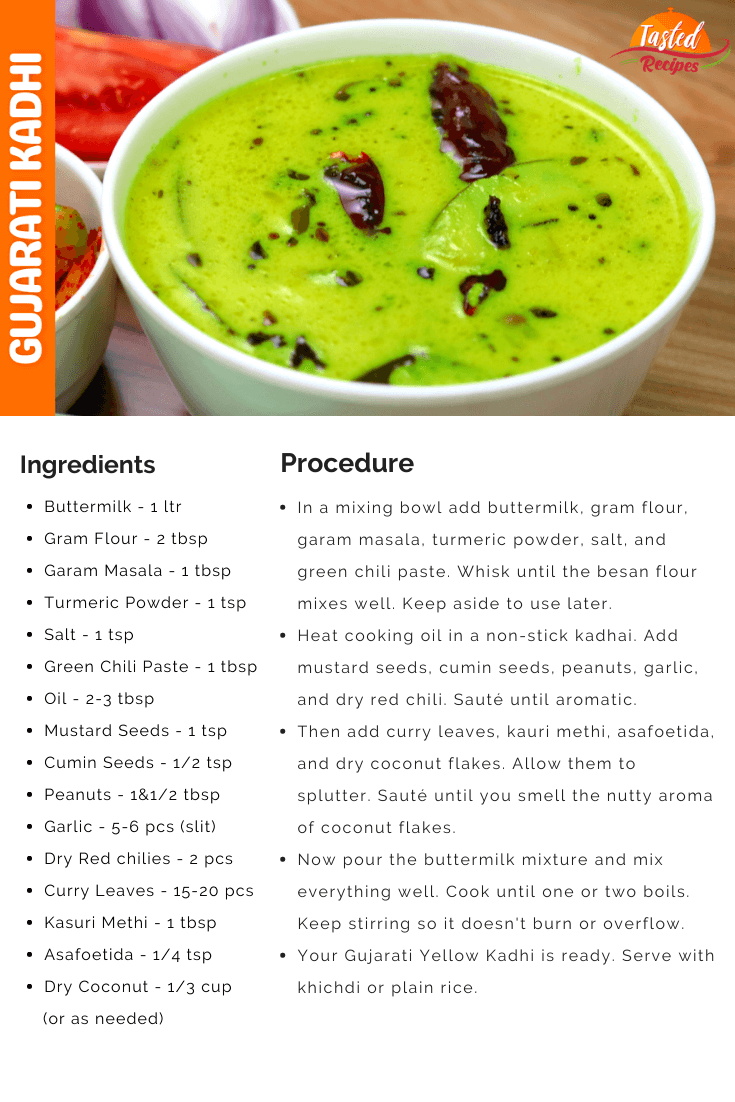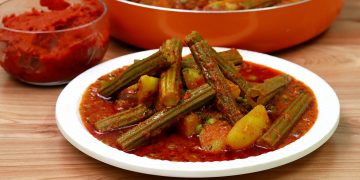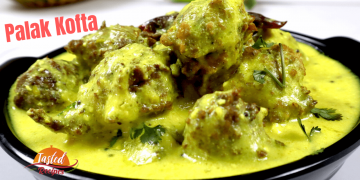The Gujarati (पिली वाली) Kadhi recipe that I am sharing today is the yellow one. I have already published White Gujarati Kadhi here on this blog. Moreover, there’s a white kadhi recipe video on Tasted Recipes YouTube channel. So check out the links to browse the recipe details.
Okay, now back to our yellow kadhi. I have enjoyed my kitchen and cooking journey as a Gujarati housewife for over four decades. During my trip, I tried various recipes, including Punjabi. So here’s one of my favourites, tried and tested kadhi recipes.
Table of Contents
What is Special About the Gujarati (Yellow) Kadhi?
First thing first, this kadhi is authentic kathiyawadi style kadhi. It is thick, nutty, sour and mildly spicy. Let me tell you that this Gujarati kadhi is not the usual खट्टी मीठी kadhi that we make at home.
However, you can try the khatti-meethi kadhi by adding jaggery or sugar. But here, I have skipped both of them.
The speciality of this kadhi lies in the tempering process and the ingredients that we add. Peanuts and coconut flakes are the two reasons why I love this kadhi. They induce nutty and crunchy flavour when tempered in hot oil.
Since we have made both white and yellow kadhi, here are some fundamental differences between them. Read below.
Gujarati Kadhi Yellow v/s White
The culinary difference between them is the curd and buttermilk base. The white kadhi is made using a thick curd base, whereas the yellow one uses buttermilk. Taste-wise, they also differ because, in white kadhi, there’s jaggery, a natural sweetener.
On the contrary, the yellow kadhi has neither jaggery nor sugar. As a result, it’s sour and mildly tarty.
The texture is also an important point where both of them differ significantly. The yellow kadhi has turmeric powder, a natural dye to give the yellow tint to the kadhi.
But, at the same time, the white one doesn’t contain turmeric powder. So, adding turmeric powder to the white kadhi will become yellow khatti-meethi kadhi. Isn’t it interesting?
Apart from a couple of ingredients, both yellow and white kadhi share things used in the tempering process. Those couple of ingredients are peanuts and dry coconut flakes. These items in the yellow kadhi give a nutty flavour. Moreover, the coconut flakes make every bite chewy. I like this.
Let me tell you that the cooking process is the same for both the kadhi. First, make the curd or buttermilk base and then temper it using spices and masala powders. That’s it. Your traditional Gujarati kadhi is ready.
The Buttermilk Mixture
As I said, the yellow kadhi has a base of buttermilk. Therefore, we will be doing the same here as well. Mix gram flour, garam masala, turmeric powder, salt and green chilli paste in buttermilk.
Use a whisker to whisk the mixture. Make sure the gram flour disappears entirely into the buttermilk. If you have a hand beater, then use it. The beater must run at the lowest speed; otherwise, the buttermilk will spill.
Once it is ready, keep it aside and proceed with making the tadka.
Roast Peanuts and Dry Coconut Flakes
To get the much desired nutty flavour in our kadhi, we need to roast peanuts and dry coconut flakes properly. Do this until they both change their colour.
When the colour changes, you will smell the burnt fragrance of coconut and peanuts. That’s the exact taste and smell that we need in our kadhi. So I would appreciate it if you didn’t skip them. You will love it.
Extra Shots
- Avoid sour buttermilk as much as possible because it will make your kadhi tarty.
- Do not skip turmeric powder since it will give the yellow texture unless you don’t prefer it.
- Don’t swap whole dry red chilli with red chilli powder. Doing this can ruin the taste & look.
- You can substitute garlic pieces with the paste. Both work fine in the kadhi.
- Give a couple of boils to the final kadhi on high heat to create fluffy foam on the top.
- One can replace dry coconut flakes with desiccated coconut. However, dry coconut flakes are preferable.
- If your kadhi is too sour, add 1 tbsp sugar or jagger to reduce the intensity of the flavour.
Follow the tips above, and I am sure you will cook lip-smacking authentic Gujarati kadhi. Let me know in the comment section how you did.
Gujarati (Yellow) Kadhi FAQs
How do I make this kadhi with fewer items?
Even if you are short on ingredients, you can still make this kadhi at home. You at least need buttermilk, gram flour, turmeric powder, salt, green chilli paste, mustard seeds and cooking oil. These are the minimum required ingredients.
Can I use curd instead of buttermilk?
You can, but the traditional kathiyawadi style of making yellow kadhi doesn’t need curd. Instead, it is made using buttermilk. If you insist on using curd, then add water because curd will increase the thickness of your final product.
Can I swap gram flour with corn flour?
Do not substitute gram flour with corn flour or similar ingredients. Besan is the heart of this recipe. Traditional kadhi is made using besan and can’t be replaced with other items. Hence, kindly don’t attempt to do it.
Is this a kadhi recipe for bachelor’s?
This recipe is for all those who want to taste authentic regional kadhi. If you are a beginner, watch my recipe video or download the recipe card. It has recipe steps that will help you cook. If you still have doubts, contact me using the comment section.
Can I skip garlic? Will the taste change?
You can skip the garlic, which won’t change the taste. Garlic has a strong flavour and aroma. Skipping it will make the kadhi a little mild.
